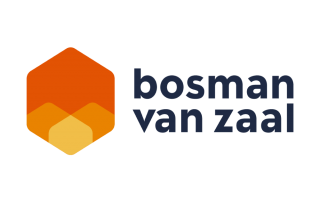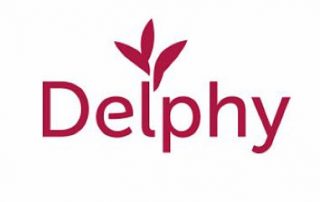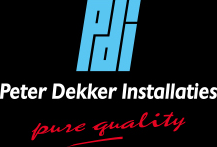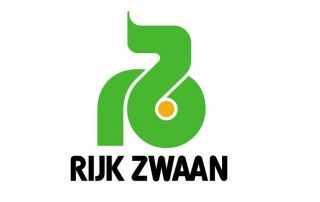Partners for Perfect Solutions
Sustainable Climate Management
Now that greenhouses are increasingly being used to protect crops against the negative impacts of the outside environment, it is time for the next stop: optimising the climate inside. The grower can control the growing climate of the plants in a greenhouse with screening and thereby optimise production results.
In the highly competitive flower sector, increasing production volumes and improving flower quality are of utmost importance for growers to stay ahead of the game. The use of movable screening systems offers several opportunities to realise that. When it comes to vegetable production, growing in greenhouses provides good opportunities to support food security and food safety conditions. Screening systems add to production, water use efficiency and quality increase by making the growing climate more favourable for the plant.

Screens have many positive results, particularly in greenhouses with permanent roof vent openings. Screening during the hottest parts of the day will reduce the day temperature maxima and humidity maxima by 10 percent. The growing climate will become more favourable, leading to increased production, uniformity and better crop quality. While day temperature will be reduced, less evaporation and transpiration will take place, so less irrigation water will be needed per crop. Lowering the crop temperature during the day will also improve the quality of the flowers in terms of fewer black spots, less discolouration and longer stems.
The screens also increase night temperature. Crop temperature will be 3 to 4 ‘C higher during the night, this is positive for the growth of the plant as it will increase production. A higher crop temperature during the early morning will reduce the level of condensation on the crop, thereby allowing gewer fungal diseases to develop. Firtsly, this is positive for production levels as healthy plants produce better and for reject levels due to fewer damaged flowers. Secondly, it will reduce the use of pesticides significantly.

The screens also diffuse the sunlight, resulting in deeper penetration of radiation into the crop. If radiation can reach deeper into a crop, more leaves can use its energy for photosynthesis, resulting in better growth. Diffusing the incoming radiation therefore leads to higher production. The climate system is linked to management software. With this software automated settings can be made for the amount of crop screening, in combination with adjusted irrigation. Based on weather data and climate recordings inside the greenhouse, the screen will be (partially) closed or opened to optimise the greenhouse climate. All data in the computer can be shared online with project partners via the LetGrow.com application.
Greenhouse climate optimisation results in higher production levels with better quality and less use of pesticides and water. Dutch technology, although having higher initial investment costs, will be most cost-effective and environmental-friendly in the long run because of the reduced use of inputs and the increased output.
Optimal Growing Conditions
Investing in greenhouses is a smart idea if you want to grow vegetables in an efficient and sustainable way. Growing vegetables in greenhouses make it possible to target the top of production to the months when prices in the market are highest. Production can be year round satisfying the needs of your retail clients. Money is saved as less water and fertilisers are needed to produce 1 Kg of vegetables while pest and diseases can be controlled easier preferably using biological methods.
Green Farming has designed three levels of greenhouse technology suiting local production conditions: the BASIC module, the PLUS module and the ADVANCED module. The modular set-up will allow growers or investors to choose the most suitable module suiting their own conditions and in time “grow” to a higher level of production technology.

A. The BASIC module:
- Production in soil
- Strong greenhouse structure with 4 m gutter height
- Fixed ventilation windows at top and sides
- Ventilation windows covered with insect netting
- Manual application of water and fertiliser
B. The PLUS module:
- Production in soil
- Strong greenhouse structure with 4 m gutter height
- Manual adjustable ventilation at top and side vents
- Ventilation windows covered with insect netting
- Automated water and fertiliser application
C. The ADVANCED module:
- Production on substrate (coco peat/pumice)
- Strong greenhouse structure with 4 m gutter height
- Ventilation windows covered with insect netting
- Automated climate control
- Automated water and fertiliser application
- Movable screen

The automated water and fertiliser application with the FertiMIX-Go! will allow for the timely application of fertilisers and water in accordance with the needs of the plants. The automated climate control through the iSii-compact processor will create the optimal growing conditions for the vegetable crop. The movable screen will reduce sun intensity and temperature during day-time and keep up the night temperature closer to the optimal condition to grow vegetables.
Efficient Water Management
Hydroponic systems are not common in East African horticulture and water management can often be greatly optimised. Therefore there is much to gain. The differences between growing in soil and in a controlled hydroponic system are huge.
Farms can become more productive at lower running costs and more sustainable so that less water and fertilisers are wasted in the production process and spilt into the environment by the efficient management of water. The set up of good water management requires more investments in the farm. It is possible with our equipment to pin down the financial demands during production and to realise sustainable production at a higher level of quantity and quality.

Huge amounts of water is necessary for a hydroponic system, which we find in boreholes, rain, sea, dam and drain. But water savings are present. Large volumes of drain water are being reused in the soil, so water use in general is low. By optimising fertigation management drain levels are lowered without risking accumulation of salts and less water is supplied to the hydroponic system. Water reuse in the hydroponic system is also an option.
We find water, desalinate it by reverse osmosis, mix it with fertiliser after which it is transported to the substrate. The drain water is collected and reused in the greenhouse.

By implementing the hydroponic system the output to the environment is significantly lowered and becomes close to zero when drainage water is being reused in the hydroponic system. Because of the savings on fertiliser application in the soil-based cultivation, the running costs are strongly reduced. Production amount and quality increases in terms of increased volumes in stem lengths, resulting in increasing revenues.
Post-harvest quality
The major part of the East African flower export is shipped to long-distance destinations, like Northern Europe and Russia. For long-distance shipments the initial quality of the flower and the quality of the post-harvest chain are tremendously important. The ultimate flower quality can be defined as the product of those two aspects. For many flower producers in East Africa the post-harvest phase is an area where great gains can be made.
That is why our members and partners have developed the Post-harvest Protocol. The main objective of the protocol is to improve the vase life of roses by optimising all components of the post-harvest phase. In order to achieve higher profits and deliver a high-quality product to consumers, it is important that all aspects of the post-harvest handling phase are optimised. By following a post-harvest protocol, the farm should be able to implement best practices more easily.

The protocol includes several important aspects for flower growers. Such as:
- Starting quality, based on soil and water parameters in the growing medium.
- Crop protection management, focussing on prevention of botrytis development and taking residue levels into account.
- Flower care and handling during harvesting, storage, grading and bunching.
- Use of packaging and bunching materials, including rubber bands, plastic sheets and carton boxes.
- The importance of the on-farm cold chain during harvesting, storage, processing, packing, as well as the transport cold chain up to arrival at the handling agent.
- How to use services such as soil and water sample analyses, quality feedback from receivers at the Dutch auctions, farm audits, vase life testing and cold chain monitoring to imrpove the product quality.
The protocol takes into account the three major components that determine the vase life at the consumers:
- Initial flower quality; the initial conditions of the flowers at the moment they are harvested.
- Water quality, hygiene standards and post-harvest treatment.
- Post-harvest quality management, including post-harvest handling and cold chain management.

The Post-harvest Protocol shows how farms can implement best practices in post-harvest management. By optimising the important aspects in the post-harvest phase at the farm, flowers can be shipped with the expectation of good quality and sufficient vase life upon arrival. We offer integrated solutions by combinbing the expertise of our members and partners.
Knowledge exchange
Green Farming sets up various demonstration projects together with local businesses and knowledge institutions to show which technologies, products, knowledge and services are available and how these can be applied to the local situation. The results in terms of production levels, efficiency of input use, production costs and revenues are shared with the sector via open days, professional journals and reports.

Our Partners
The Green Farming consortium consists of approximately 25 leading companies in horticulture technology which supports the program and is actively involved on the level of training and knowledge transfer. The program is coordinated by the foundation Green Farming. Depending on the nature of the project companies are asked to join and to cooperate joint to develop the market.
Contact Us for More Information
Please fill in the contact form below or send an email to info@greenfarming.nl.









